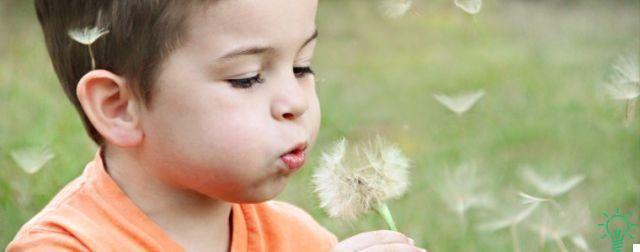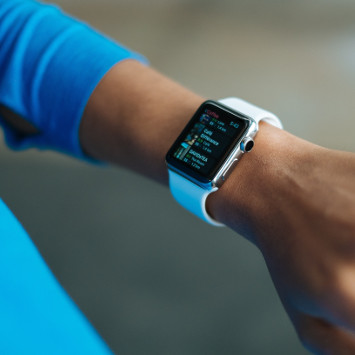Learning to breathe well helps to live well.
I've always been fascinated by power of breath.
Breathing is in fact an absolutely natural and common gesture for us human beings, but it is also an important one access door to very deep and archaic meanders of our mind and physiology.
When was the last time you paid attention to your breathing?
The search for psychophysical well-being cannot be separated from one of the major resources at our disposal, capable of improving quality of life and harmonize that complex interconnection present between all biological systems: the respite.
Yet breathing is so common for us that we sometimes forget it.
When was, for example, the last time you paid attention to yours respite?
Unless you are a professional athlete or a practitioner of yoga o mindfulness it's hard for you to remember it.
You probably already know how important it is to take care ofsupply. After all, you eat at least three times a day throughout your life (except on days when you practice intermittent fasting!).
What role should we give to breathing then, given that they are at least fulfilled 20.000 breaths every day?
Un vital role!
This, in fact, is the translation of the Sanskrit term prana, which means vital breath, and not only because without breath there is no life.
Who practices yoga, martial arts or others discipline psicocorporee he knows well that every movement is connected to the breath.
Virtually all religions have always given great importance to this process and it is our task to recover the notions, integrate them with the most recent scientific evidence and insert them into our daily routines.
"Breathe! Are you alive"
Thich Nhat Hanh.
Respiration physiology
The respiratory act is divided into two phases:
- Inspiration: the air after passing through the upper airways and the bronchi penetrates the pulmonary alveoli where the gaseous exchanges with the blood take place.
- Exhalation: passive act due to the elastic return of the lung tissue.
The respiratory rate in adults is approximately 12-20 breaths per minute. All those who exercise breathing and respiratory muscles tend to have a frequency in the lower part of this range. However, breathing is not just an act in which oxygen (O2) is inhaled and carbon dioxide (CO2) is exhaled, but it represents a window on the functioning of the autonomic nervous system.
To (re) learn to breathe, children are the best teachers

Try to observe the way a baby breathes and how the belly swells, you will notice that the diaphragm moves differently.
Few adults can breathe as effectively and these are the most common mistakes:
- We take breaths too short e Frequently.
- We never observe how we breathe.
- We do not use the diaphragm.
And speaking of diaphragm ...
Il diaphragm it is a dome-shaped muscle that separates the chest from the abdomen. It is the main inspiratory muscle and, when used correctly, allows for deep and efficient breaths.
To find out where he is, place your hands just below the rib cage and follow the contours of the ribs, from the belly to the hips. Notice its movement during a breathing cycle.
Stress, poor posture, excessive sedentary lifestyle and other bad habits lead instead to perform short breaths using only the upper chest.
Among the errors, the obstinate habit of breathe through your mouth - day and night - which creates stress in the body because it activates the sympathetic branch of the autonomic nervous system and causes a greater elimination of carbon dioxide.
Breathe “less”, live more

This is what emerged from studies on the animal world by relating respiratory rate to metabolism, energy expenditure and oxygen consumption.
Evidence on the subject found inhigh tolerance to CO2 (carbon dioxide) and in the slow breathing the common denominator of the longevity of bats, moles and other mammals.
On the other hand, a chronically rapid and shallow breathing is the basis of the states of hyperventilation, as happens when the mind is overloaded and we sigh without realizing it. If today we find ourselves more and more hungry for air it is also because we have lost contact with our physiology, forcing it to give it all without being able to recover energy.
"When the breath is labored, the mind is also unstable"
Hatha Yoga Pradipika.
Learning to breathe: practical examples
We have always thought that thecarbon dioxide was a mere waste product, if not something negative. This gas is instead of vital importance because it helps to absorb oxygen in the cells thanks to theBohr effect: more oxygen is released from hemoglobin to tissues in the presence of higher levels of CO2.
This is the oxygen paradox, so oxygenation is poorer when we breathe quickly or with the mouth. Since better oxygenation is correlated with better psycho-physical performance and greater energy we must learn to exploit the Bohr effect in our favor.
No, I'm not advising you to imitate American biohackers and drink large quantities of San Pellegrino water all day because of its carbon dioxide content.
(Note from GetPersonalGrowth: we decided to launch this column on biohacking based on scientific evidence with Nicola, also because at the moment in the world of biohacking there are people of dubious training who share instructions and indications often bordering on scam).
There are decidedly more effective and cheaper techniques to increase the availability of CO2:
- Breathe slowly reducing the number of breaths (ideally less than 10 acts per minute for sessions lasting about 5 minutes to be repeated several times during the day).
- Exercise to produce CO2 in the process of converting oxygen and food into energy
There is also a nice way to combine these two activities to maximize the result: during a brisk walk hold your breath for about 10-20 steps after a normal exhalation, then breathe normally for 30 seconds. Repeat the cycle at least 5 times.
(NB: This basic exercise is suitable for everyone except those with severe asthma or uncontrolled high blood pressure.)
In general, to breathe well during low intensity physical activity it is important to try to breathe through the nose only to increase the production of nitric oxide (NO), another gas generated in our nostrils with remarkable beneficial properties.
We have seen how important it is to breathe well at rest and during physical activity, but we must also pay attention to what happens to notte.
Since long-term mouth breathing is always harmful, we must limit this inclination even during sleep.
Sleeping on your side it's a great way to avoid snoring or sleep apnea, but it can be difficult for some to learn and maintain a new position.
There is also yet another strategy, apparently "weird", which can greatly improve the way we breathe at night and consequently the quality of our sleep. We have dedicated an entire video lesson to him in a new training project that I am carrying out together with Andre for the readers of GetPersonalGrowth. He will definitely tell you about it in the coming weeks.
Breathe better, live better with these breathing techniques

Breathing is the only act that is both involuntary and under our control. Do not consider it a coincidence but an invitation to actively participate in this process with the proposed exercises.
In fact, by making this function temporarily voluntary and conscious you will be able to influence the autonomic nervous system and the emotional reaction to a stressor. I refer in particular to the activation of the Relaxation Response described at Harvard University for the first time in the 70s by Dr. Herbert Benson, Cardiologist.
Work with the breath (Breathwork) can help us manage the sense of overload, fatigue and stress that derive from the way we lead our life. Queuing at the cash desk or stuck in traffic you can take advantage of this great opportunity and practice some breathing techniques.
These are the most common benefits you will get:
- Stress management e reduction of cortisol production.
- Increase ofHRV.
- Reduction of pain perception through the production of endorphins.
- Elimination of toxins with stimulation of the lymphatic system.
- Best tissue oxygenation and activation of the mechanisms cell regeneration.
- Control of the blood pressure.
- Reduction of anxious states.
- Increased quality of sleep.
- Optimization of digestion and increased production of enzymes following stimulation of the vagus nerve.
- Improvement of posture increasing the expansion of the rib cage and exercising the iliopsoas and erector muscles of the spine.
Here are some techniques to help you start practicing:
1) Exercise of cardiac coherence
The cardiac coherence exercise allows us to enter a psychophysiological state of effective communication between the heart and the brain.
This is one of the techniques with the most solid scientific literature and essentially consists of performing 6 breaths per minute.
Specifically, following the video below, you will have to inhale through the nose for 5 seconds inflating the belly as the ball rises and exhale for 5 seconds with your mouth when it comes down. Try doing it for 5 minutes two to three times a day, for example as soon as you wake up, during a break from work and before going to sleep.
2) Wim Hof breathing
As we have seen, chronic hyperventilation has acquired a bad reputation, however, breathing intensely for a short period of time can have therapeutic and health-promoting effects. strengthening of the immune system.
This is the case of the practice of Tummo, born in Tibetan monasteries and made known in the West by Wim Hof in his method which also includes exposure to the cold and meditation.
Lie down and run 20-30 very deep and fast breaths, then exhale normally and hold your breath as long as you can.
Then take a deep breath and remains in apnea for 15 seconds before emptying your lungs.
Repeat this cycle for at least 3 times higher.
It is recommended not to practice these exercises in water, driving or in case of cardiovascular diseases. As this method requires some practice it is advisable to consult an instructor or follow in-depth tutorials before following the instructions.
3) Square breathing

It became popular because it was used by Navy SEALS to stay calm in high-risk situations, this exercise is ideal if practiced before, during or after a particularly stressful event.
Inhale for 4 seconds with the nose, hold your breath for 4 seconds, exhale for 4 secondsi with the mouth, hold your breath for 4 seconds.
Repeat the cycle for at least 6 times higher.
Once the technique is consolidated, you can extend each step up to 5 o 6 seconds.
4) Breathing technique 4-7-8
this technique, already described in detail in this GetPersonalGrowth article, induces a state of deep relaxation and helps sleep.
How are you breathing?
Anyone embarking on a lifestyle improvement path should be aware of how they breathe.
Place one hand on your stomach, one in the center of your chest and study your breath.
What part of the body moves during breathing? Is your breathing fast and shallow or slow and deep? Is it regular and fluid or unstable and forced? Are there any breaks?
The key to optimizing this process lies in starting fromobservation - on the other hand, a respiratory model corresponds to each psychophysical state. Working with the breath consists precisely in the conscious use of breathing to improve quality of life, emotional reactions and stress management.
In the queue at the supermarket try to slow your breath until it is done 6 breaths per minute while inhaling for 5 seconds and exhaling for another 5 seconds. Also remember to breathe actively when watching a sunset, when you want to relax or wind up before an important event.
By modulating your breathing you will be able to change the information you send to the brain.
We are witnessing a global crisis ofpsychophysical energy and it is increasingly common to feel overwhelmed and exhausted. Now is the time to do something concrete before health and psycho-physical well-being are compromised.
Stop and breathe.
"How much longer will you wait before asking for the best for yourself?"
Epithet.






